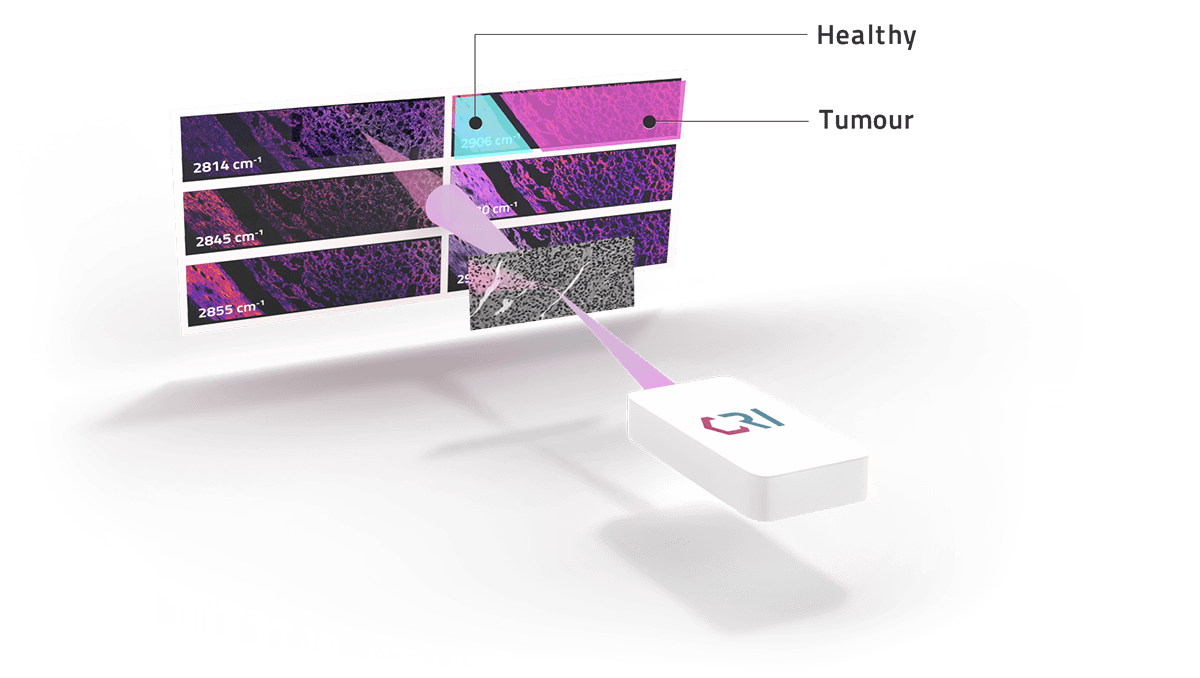Technology
Chemometric imaging of cells and tissues is now faster, more accurate and low-cost thanks to graphene properties
CRI technology
Our graphene lasers enable fast, easy to use and low-cost CRS applications
Fiber lasers are compact, low-cost and alignment free making them ideal for use in biomedical diagnostics. CRI is developing ultrafast and inherently synchronised fiber lasers based on graphene/carbon-nanotubes.
These lasers will drastically simplify Coherent Raman Scattering systems enabling rapid and low-cost label free imaging. This technology enables new applications in medical technology where speed, ease of use and low cost are essential.

Current technology
Stained tissue biopsies
Current tumour identification through histopathology follows an established process. Tissue biopsies are stained with hematoxylin and eosin dyes (H&E staining).
Slides are then viewed by a histo-pathologist, who provides a qualitative and subjective diagnosis.
without staining
Spontaneous Raman Spectroscopy
Every component of a biological specimen (cell or tissue) is characterized by a vibrational spectrum (also called “fingerprint”) that reflects its molecular structure and provides an endogenous and chemically specific signature for its identification. Measuring this, tumour identification can be obtained with 90-100% sensitivity and specificity, without the need for staining or labelling.
Tumour identification by Spontaneous Raman Spectroscopy is already available offering high sensitivity and specificity for disease in many parts of the body, but has low acquisition speed.

Coherent Raman Spectroscopy
Fast, quantitative and chemically rich tissue data
Coherent Raman scattering spectroscopy (CRS) enables much faster imaging as the signal strength is much greater. CRS requires synchronised tunable picosecond lasers. Such systems are typically bulky, expensive and require tuning by an expert operator.
The size and cost of the laser system limit the application of Coherent Raman scattering spectroscopy to medical diagnostics. Our unique offering is to provide CRS imaging which is faster, easy to use, accurate and low-cost using Graphene and other Graphene Related Materials (GRM’s).
Graphene enabled CRS
Low-cost, light-weight and simple to use systems, thanks to graphene
Graphene is a single layer of carbon atoms with unique mechanical, electrical and optical properties. Because of its massless Dirac fermions, graphene is the only material that absorbs light at every wavelength.
Graphene behaves like a fast switch that transmits light only for a very short time enabling the generation of ultra-fast laser pulses. Using two fiber laser cavities we can produce inherently synchronised picosecond laser pulses that make fast CRS imaging possible.
Statements about future products represent management intentions, but are not to be considered commitments to any specific clinical or non-clinical capability or performance targets.




